Macbook Says Disk Full I Cleared a Bunch of Space Now Full Again
How to fix the "Startup Disk Full" error on your Mac
As of 2020, Mac difficult drives are as spacious as always. The maximum hard drive size you tin currently get is 8 TB but lamentable, that's a Mac Pro. Another issue is the macOS itself. The modern macOS versions, like macOS Big Sur, are increasingly browser-oriented, aiming to perform most of the work online, thus reducing the toll on your hard bulldoze. Merely where is our disk space going and so?
I answer is hidden website cache. Artem Russakovskii from Android Police spotted that Chrome creates notoriously big enshroud folders fifty-fifty subsequently you've visited seemingly uncomplicated sites, like eaze.com. In some cases, it was 9GB worth of cache collected from one site solitary. So these days, it's essential to know how to make clean the startup disk on Mac. Because there comes a 24-hour interval in the life of every Mac user when the message "Your startup deejay is almost total" will hitting you hard. Merely how could a full startup disk affect you?
Let's start with the beginning: what is a startup disk? Well, it's the hard drive that contains your operating arrangement, which makes it the most important disk of all. And so when the "Your startup deejay is almost total" bulletin pops up, it basically ways yous are running out of infinite on your chief deejay bulldoze and that is very bad news.
What does it mean when your Mac says the deejay is full?

When a Mac startup disk is reaching total capacity it is bad news for two reasons:
-
Soon you'll run out of infinite entirely.
-
A deejay that is full (or even nigh total) is going to perform slowly.
What most people don't realize, is that their Mac actually converts the available space on their startup disk into virtual memory, which you use for day-to-day operations. Ideally, ten% of the disk should be gratis to leave your Mac'south Os plenty space to operate. Therefore, if y'all're running low on space, you lot're heading for big problems.
How to bank check deejay space on Mac
To get to the root of the problem and find the solution, you lot must discover what is taking up all the infinite on your startup disk drive.
To have an overview on how your space is beingness used simply follow these steps:
-
Click on the Apple Icon
-
Select About This Mac
-
Click Storage (or More Info > Storage on older Macs)

From hither you'll exist able to run across exactly how much infinite yous've got left and what's eating up the used one. If yous are running out of bachelor disk space, information technology's time to delete some files or install a new hard bulldoze.
Luckily, your disk volition be full of movies, photos, and audio. Why luckily? Considering these files are easy to remove or move to another location. Any external bulldoze or cloud storage will do the trick and your Mac's going to thank y'all for leaving it space to breathe.
Still, in that location's some other scenario in which other information is taking up the free infinite, with files yous cannot or practice not want to delete. This situation's a flake trickier, but don't worry. These tips will surely give your Mac some actress infinite. We've grouped them into two master categories:
-
5 Essential tips to articulate startup disk
-
5 Bonus tips to free up deejay space
And so, allow'due south start fixing your Mac correct now.
ten Essential tips to clear the startup disk on a Mac
Believe it or not, i of your Mac's occupations is to create junk. Only don't blame it, it's but doing its chore. The Mac's system, similar all the other operating systems, depends on creating temporary files, caches and backups to perform correctly. However, afterwards this information has done its part, it remains latent on your Mac, killing space for no purpose.
The good news is that it's extremely uncomplicated to remove these useless files, freeing up gigabytes and fixing your startup deejay full problem, without affecting your personal data.
And then hither is how you tin can fix the "Your startup disk is almost full" error message past deleting the files you don't demand and never use.

Delete App Cache (Organization Junk)
The funny affair with cache files is that they are as necessary as they are useless. At commencement, caches serve a major purpose, every bit they get created in club to speed upwardly processes. But once that procedure ends, you're left with temporary junk generated past apps and organisation processes. Unless you lot remove them yourself, they will remain on your Mac for long. If you don't, then these temporary files will become a permanent trouble for your hard drive, as they will continue to pile up and make your startup disk total.
Fortunately, it'due south an piece of cake problem to solve, only past removing them. And don't worry: your apps volition soon refresh their caches and exist back up to speed in no time.
To remove app cache files and clean up a startup deejay, follow these steps:
-
Navigate to Finder > Become > Go to Folder
-
Type in ~/Library/Caches
-
Go into each folder (or just the ones taking up the almost space) and delete the files inside
-
Now do the same for /Library/Caches (without the ~)
Note, that in that location is always a small risk to manually deleting files (you might option the wrong folder), then consider backing up these folders before you start deleting.
Alternatively, you tin make clean up all caches in a fraction of the time and with 100% conviction if you lot download CleanMyMac Ten . This is how piece of cake it is to delete tons of arrangement junk at the same time using this flow:
-
Download CleanMyMac X and run the app
-
Click on Organization Junk
-
Click Scan
-
When the scan finishes click Clean
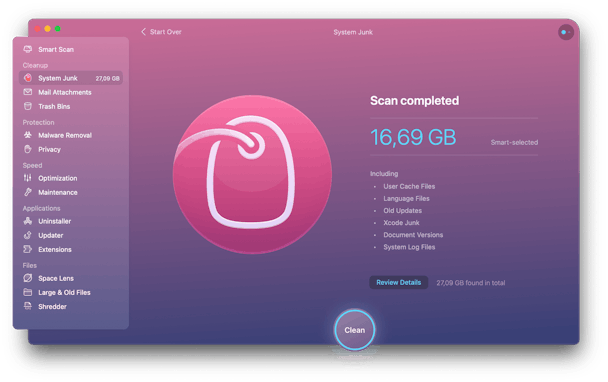
Download Free Version

Take out the Trash
Sometimes we overlook the most obvious solutions because we recall the fix must necessarily involve some complex operation. But when there's not enough deejay space, Mac can be saved through the simplest trick.
Fact is, your Trash is a graveyard for files yous no longer need. However, these files keep taking upward space on your Mac's drive. So, you've probably guessed it: take out the Trash and printing "empty" to completely get rid of those piles of useless data.

We're also going to satisfy your need for secret solutions past pointing out something you lot might have non thought most: every unmarried app has its own trash folder that besides stores useless gigabytes. The Post app is ane example, but there are many more. Just similar the full general Trash, y'all need to empty these folders in lodge to actually remove the junk and clear up disk space.
Once you empty all the trash folders in all the apps, you lot'll be ready to move to the next tip. Ready? Let's go.

Remove Time Machine Backups
Nosotros dear Fourth dimension Machine considering it creates important backups. But when your Mac can't function due to lack of disk space, there has to be a cede. Y'all tin start with removing past Fourth dimension Machine "snapshots" stored locally on your Mac. Then, the starting time footstep towards removing the "startup disk total" message is to have care of these backups. Yeah, past accept care nosotros mean remove them. To practise it, all y'all need is to temporarily turn off your Time Automobile.
Open up System Preferences > for Time Machine
Uncheck the box next to "Support Automatically" 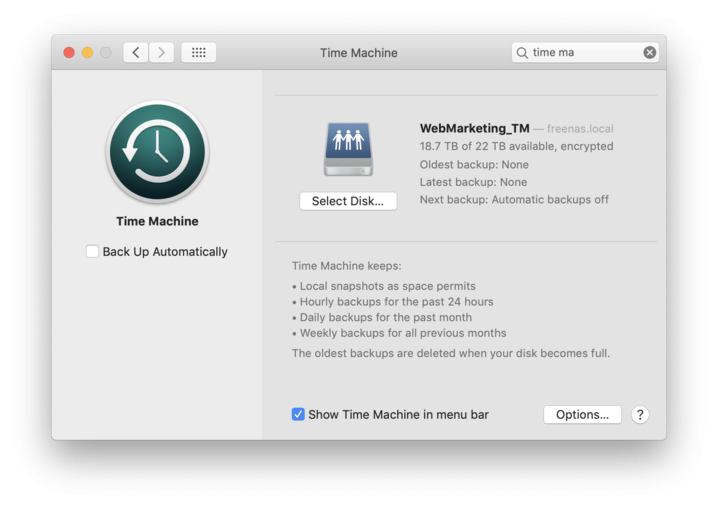
Then, yous should give information technology a few minutes to take effect. Your local Time Machine snapshots will be deleted.

Delete Browser Cache
Your net browser of choice will create caches every time you visit a new page in gild to load it faster at your next visits. However, doing this for every page you visit keeps your browser folder growing enormously, creating a bigger and bigger problem.
And then, if you lot're wondering how to safely clean a startup disk on Mac, removing browser junk is definitely a priority.
In order to remove unnecessary files, check out your browser's mode of deleting its cache, as every browser has a different procedure for removal. All the same, yous will mainly need to follow these steps:
-
Open your browser
-
Open the history tab and tap Articulate browsing data
-
Select the files you want to remove: Cookies, site data, Cached images and file
-
Cull from the top menu how far dorsum you desire to delete
-
Hit the clear browsing information button
The piece of cake and time saving alternative is to again fire up the CleanMyMac Organization Junk tab and locate your browser caches under User Cache Files:


Remove Language Packs
Most of your apps come up with language packs (also known as "localization files") that enable you lot to change the language in the app. It'due south great to have this selection, but let'southward face up it: most people only need one linguistic communication supported. Maybe two at near. The rest? They're merely wasting space.
To delete linguistic communication packs manually follow these steps:
-
Navigate to Applications
-
Correct-click (or ctrl-click) on an app and select Bear witness Package Contents
-
Click on Contents
-
Click on Resources
-
Delete whatsoever languages (ending in .Iproj) you don't need
-
Repeat for other apps
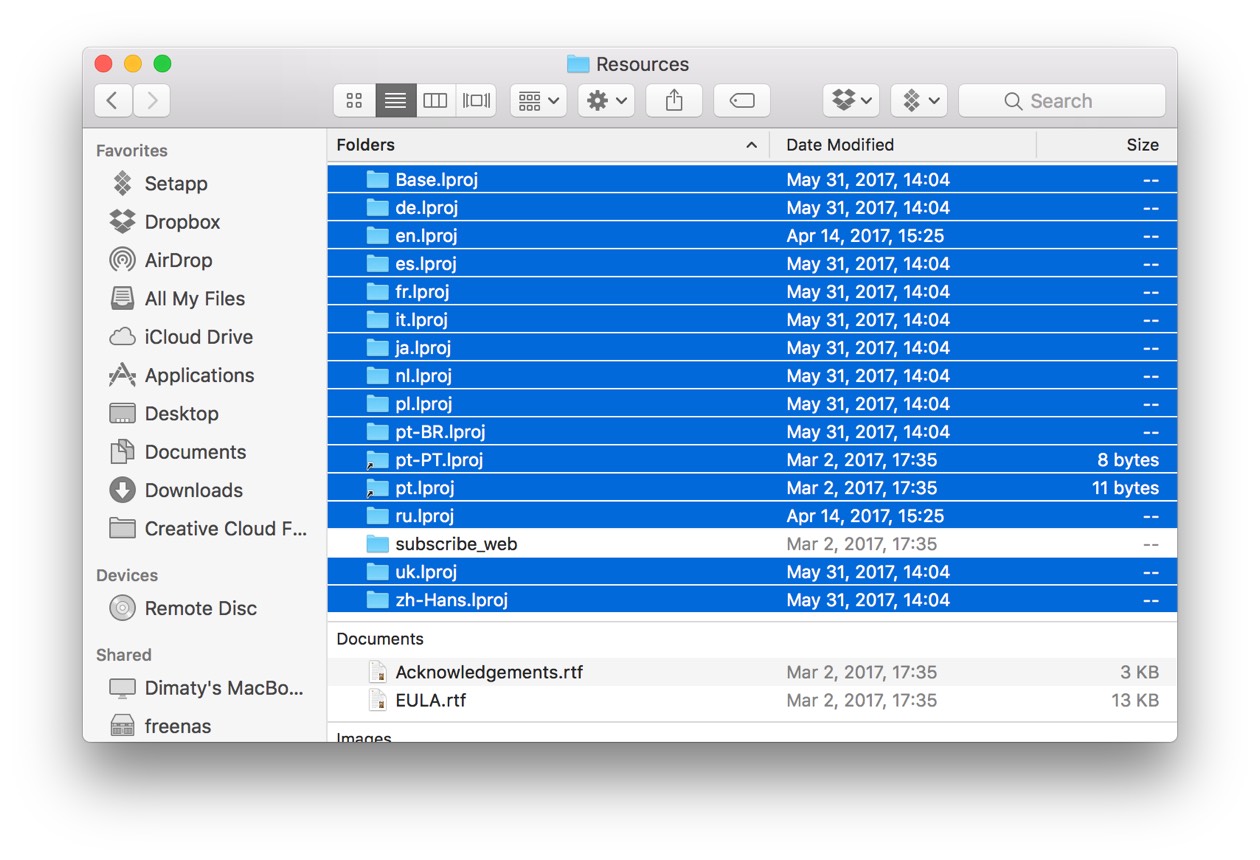
An even faster way to remove linguistic communication packs is to employ CleanMyMac'south System Junk module. After running the scan you tin click Review Details and find Linguistic communication Files. Click on it to run into exactly what linguistic communication packs will be removed. Once y'all're happy with the selections, click on the big Clean button to farther articulate your startup deejay.
Mac running tiresome on macOS Big Sur? Try this
Many Mac users reported their Macs being slow after upgrading to macOS Big Sur xi.0. This could be acquired by software non however optimized for Large Sur. Still, in that location are some things y'all can try on your Mac to compensate the Big Sur slowdown:
-
Clean up the Desktop clutter — this releases some amount of virtual memory
-
Update all your software
-
Minimize your login items in System Preferences > Users & Groups
-
Disable Dynamic Desktop
-
Utilise a couple of Mac speed up tools in CleanMyMac 10
The latest version of CleanMyMac X has added a set up of tools titled "Speed." You can do a lot of things like being able to costless up RAM and heavy memory consumers.
Download Free Version
My Mac says there'southward not enough disk space, simply at that place is
Sometimes, you can't install an update considering your system says in that location's "Non enough disk infinite" while in fact, y'all have that infinite available. This conflict could be attributed to the so-called "purgeable" space. Information technology'south basically the infinite taken past all the unnecessary stuff that can be purged and converted into free storage. One manner to free up your purgeable infinite is to disable iCloud bulldoze optimization.
-
Open your System Preferences >iCloud
-
Check iCloud Drive and choose Options
-
At present, uncheck "Optimize Mac storage"
As you can meet, iCloud backups were the part of that "invisible" space on your Mac. Information technology also helps if you empty your Trash — i more purgeable category of storage.
When the available storage is non enough, Mac disk space tin can likewise saved by removing the iOS backups.

Remove iOS Backups
Do you lot own an iPhone or iPad? Have you ever updated those devices using iTunes on your Mac? If the respond is yes, and so you near likely have quondam backups taking up valuable space on your startup disk.
To quickly free up space by removing sometime iOS backups, practise as follows:
-
Navigate to Finder > Get > Become to Folder
-
Blazon in ~/Library/Application Support/MobileSync/Backup/
-
Delete all but the well-nigh contempo backup
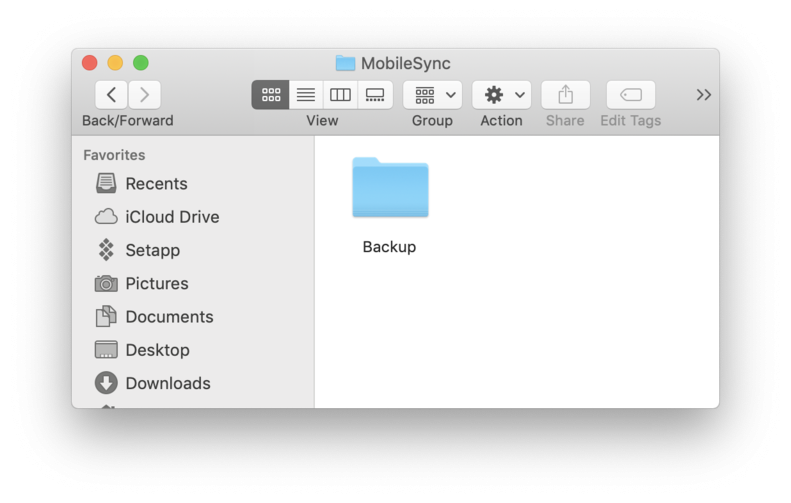

If you lot're updating your iPhone or iPad through iTunes on your Mac, yous're downloading updates for your iOS apps. Once the update has taken place, there is no more need for the update file itself and it just sits hidden on your organization with its buddies, wasting your startup disk space.
To remove iOS updates follow these steps:
-
Navigate to Finder > Go > Go to Folder
-
For iPad blazon in ~/Library/iTunes/iPad Software Updates
-
Get ahead and delete any updates you've already done
-
At present do the aforementioned for iPhone at ~/Library/iTunes/iPhone Software Updates
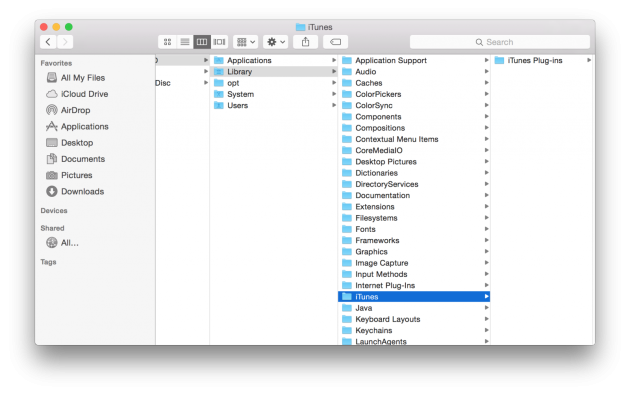

Uninstall Unused Apps
How many apps do you have on your Mac? Permit's be honest: how many of them practise you really use?
Most people have at least a handful of apps that they never launched. You might call back: so what? Simply these apps are wasting space, potentially even wasting other resources like RAM if running on background.
And then take a moment and have a wait through your applications to run across if there are some apps yous tin let go of and remove them for more space and speed. Dragging them to the Trash volition uninstall the app, just it will also leave behind lots of hidden files associated with the app, like app logs and crash reports.
To see the list of all your unused apps (and remove them completely) utilize CleanMyMac's Uninstaller module . For a hard disk drive information technology is a nifty startup cleaner and will free up all of the space that apps were taking upwardly on your Mac.
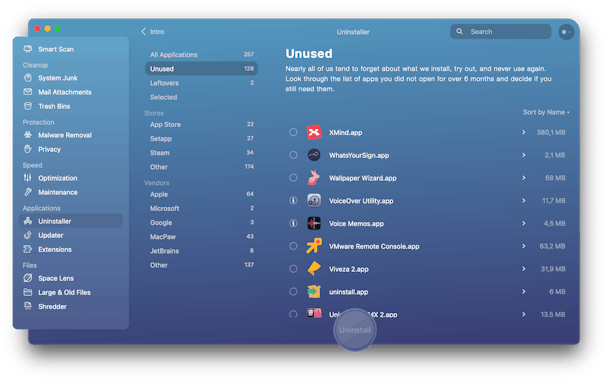
Download Free Version

Delete Indistinguishable Libraries from the Photos app
If you made the switch to the new Photos app on your Mac, chances are you lot've ended up with an old library that holds a bunch of indistinguishable pictures that take up space for no reason. It's hard to understand why Apple chose to stick with this duplication subsequently the upgrade. We tin can simply assume it's a smart way for them to convince users to buy more iCloud infinite. Whatever the reason, proficient news is that now y'all'll be able to easily remove the duplicate Photos libraries and clear up infinite. And this is exactly how to do information technology:
-
Open Finder and click on Pictures in the left menu
-
If you see two Photos Libraries, simply motility the duplicated one to the Trash
-
Note, you may want to backup the binder showtime, just in example


Limit Dropbox Sync
If you lot are a Dropbox user, you need to exist aware of the fact that Dropbox syncs everything onto your Mac past default. Look through your Dropbox folder and ponder whether or not you need all of those files and folders on your automobile.
Probably not.
So hither is how you can select which files and folders to sync in order to free up infinite on your startup deejay:
-
Open the Dropbox app
-
Click the gear icon and go to Preferences
-
Select the Account tab
-
Click Change Settings
-
Uncheck files and folders you don't want to exist synced to your Mac
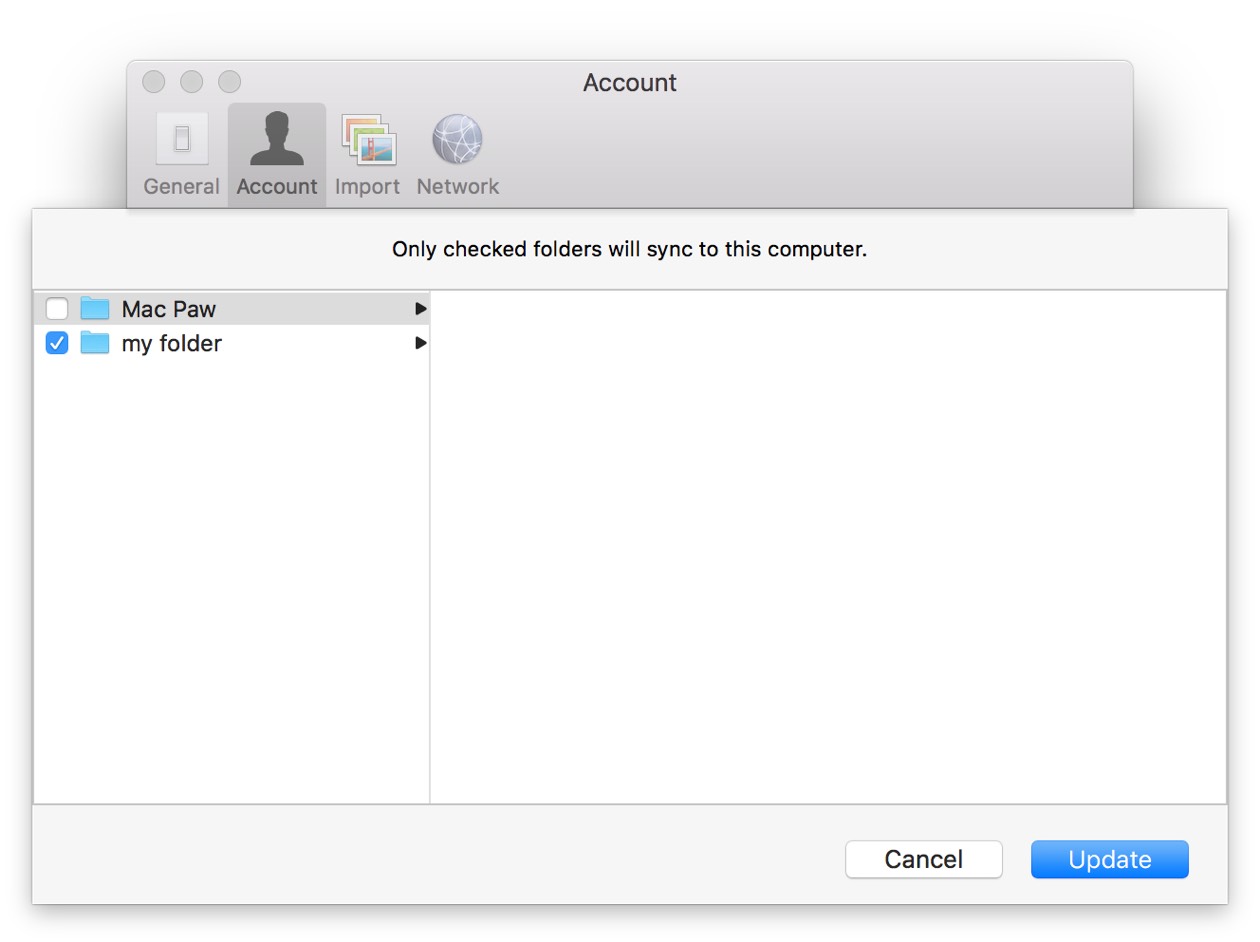
No more "Startup disk full" fault message
When wondering how to costless up space on Mac startup deejay, it'southward hard to tell where to begin. With these 5 essential tips and 5 bonus tips, you have everything you need to go rid of the "Your startup disk is almost total" message for good.
Certain tricks like deleting enshroud with CleanMyMac and emptying your trash should become part of your routine. This fashion, your startup disk will be able to focus entirely on smoothly operating your Mac. So bookmark this page and apply these tips regularly to ensure the problem never returns.
steinfeldtweas1940.blogspot.com
Source: https://cleanmymac.com/fix-mac-startup-disk-full-error
0 Response to "Macbook Says Disk Full I Cleared a Bunch of Space Now Full Again"
Postar um comentário